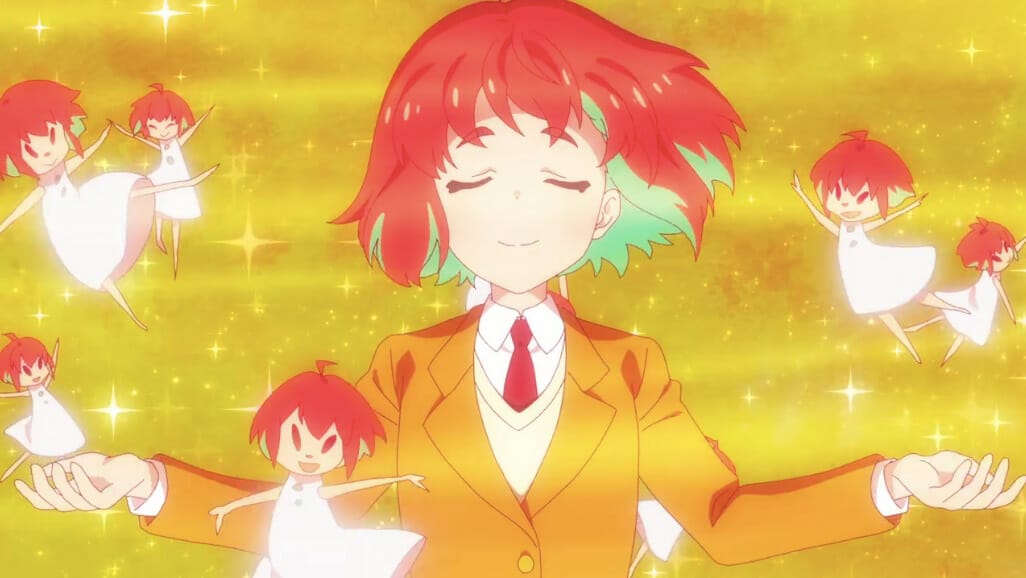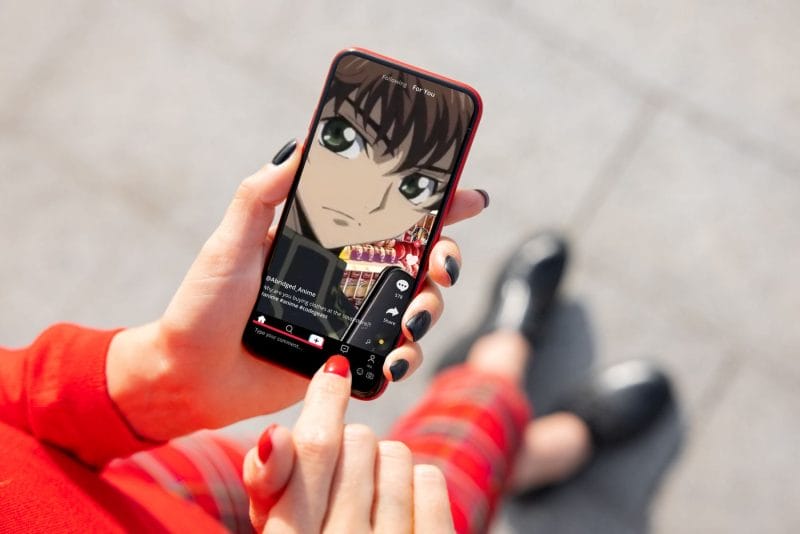Among the flurry of the successful spring 2022 anime season, one series stood out among all the others: Healer Girl, produced by Studio 3Hz. It was a gorgeously animated story of four girls working hard as apprentices in the field of Healing, using singing to channel their restorative abilities. It was a contemporary fantasy, but also a musical. When it comes to girls who use magic, what Healer Girl gave us was nothing like any other magical girl we’ve ever seen, and it arrived exactly when we needed it.
The magical girl genre encompasses a wide range of possibilities. Generally speaking, a magical girl series features a central character, typically a girl but not exclusively so, who utilizes magic to solve a problem in their world. The problem can be a big evil villain, but it doesn’t have to be. The protagonist can transform, but they don’t have to. The magic user can be a mundane child with a magic item, or an otherworldly person. Their story can take place in our modern world, but it can also take place elsewhere.
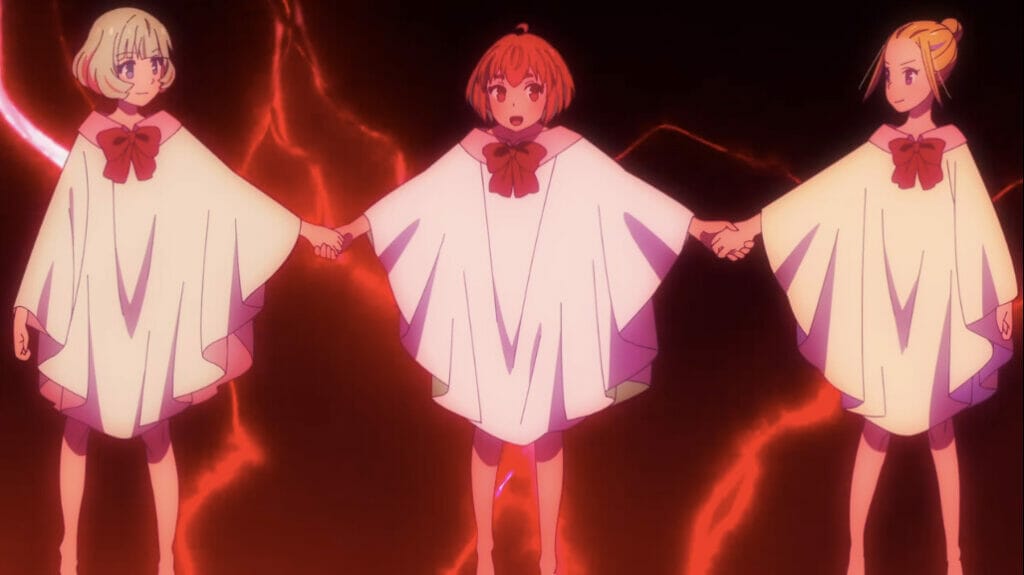
The magical girl genre has grown and evolved over the course of its over 60-year history, but for the past three decades, the battle heroine subgenre has dominated regardless of target audience—to the point where many might presume that fighting a great evil was a requirement of the genre. In the ‘90s, Sailor Moon showed the global profitability of this subgenre, which continued to swell into the 2000s before getting monopolized by PreCure, which continues to define magical girls for Japanese children to this day.
Meanwhile, grownups got the more extreme end of things in the 2010s in reaction to the success of Puella Magi Madoka Magica. Things got brutal in Magical Girl Spec-Ops Asuka (2019), and Wonder Egg Priority (2021) started from a dark premise and only got darker. While this wave of adult-oriented magical girl series initially received praise for the imaginative ways it was pushing genre boundaries, passing time and market saturation have left audiences burnt out—both with individual shows and the genre as a whole. It’s not uncommon to hear modern magical girl fans express a sense of exhaustion from this current state of magical girls for adults.
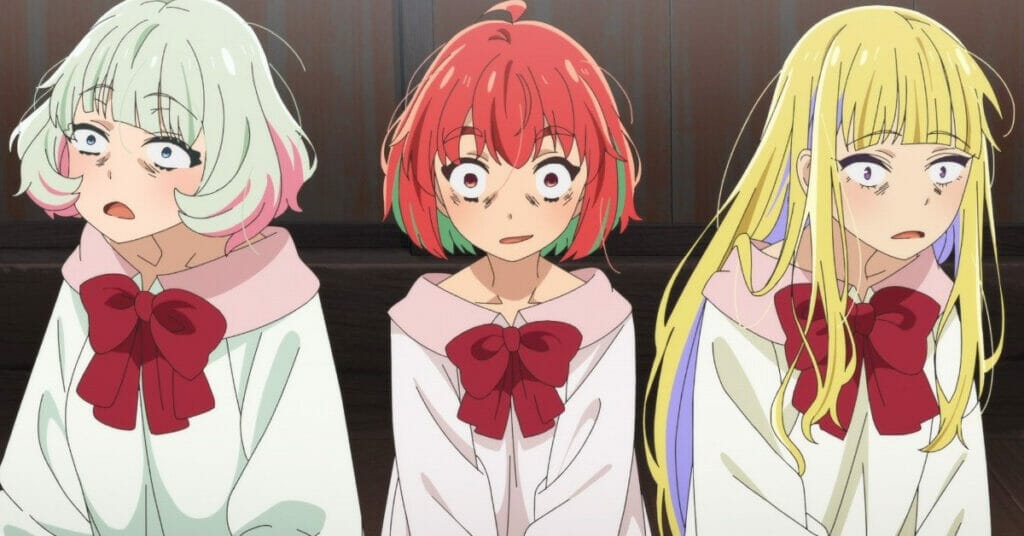
Music and magical girls go hand in hand, to be sure. The concept of idols hit Japan just as magical girls were being animated as well, and early series often had one-off episodes where the protagonist at the very least tried singing on stage. Cutie Honey (1973) had an idol form she could utilize on occasion to distract villains, and Creamy Mami (1983) set the stage for magical idols to be a hit throughout the 1980s.
Even in the battle heroine shows, there were often side characters who were idols themselves or dabbled in the possibility of becoming one. In the 2010s, the Symphogear franchise gave us battle heroines who utilized singing to become a more powerful fighter when transformed. Perhaps it was perfect to cast Ahayi Takagaki, a veteran of Symphogear, to play the Healer Girls’ mentor, Ria Karasuma, also called a witch and magical girl by others in the show.
“Kindhearted, powerful songs heal the world. These are beautiful miracles sung by humanity.” This was the introduction to the Healer Girl series when it was announced in April 2021. I, like many, had been enjoying the quartet of voice actresses (Carin Isobe, Akane Kumada, Marina Horiuchi, and Chihaya Yoshitake) performing under the name Healer Girls for a year, giving the Internet relaxing, choral covers of classic anime songs.
This tagline was unclear to me, though. Would we get a literal story of healing through music, or would it be a metaphorical one? In any case, it seemed interesting enough to give a watch, especially knowing there would be original music from the group as well. It wasn’t until they revealed the opening and ending prior to the series premiere that I could feel a sense that there would, in fact, be magic. The 11:00 PM time slot made many wary, however, as it was convention by now—again, following Madoka’s success—to use wholesome visuals and music to signal magical girl genre conventions before putting a dark and gritty twist on them.
Healer Girl, however, did not do this. While it handles some mature topics, it avoids the grim tone and subject matter that have become associated with late-night magical girl series. Ultimately, this series draws on aspects from both the traditions of children’s magical girl shows and adult-aimed ones, putting a unique spin on both and bringing something new to the genre as a whole.
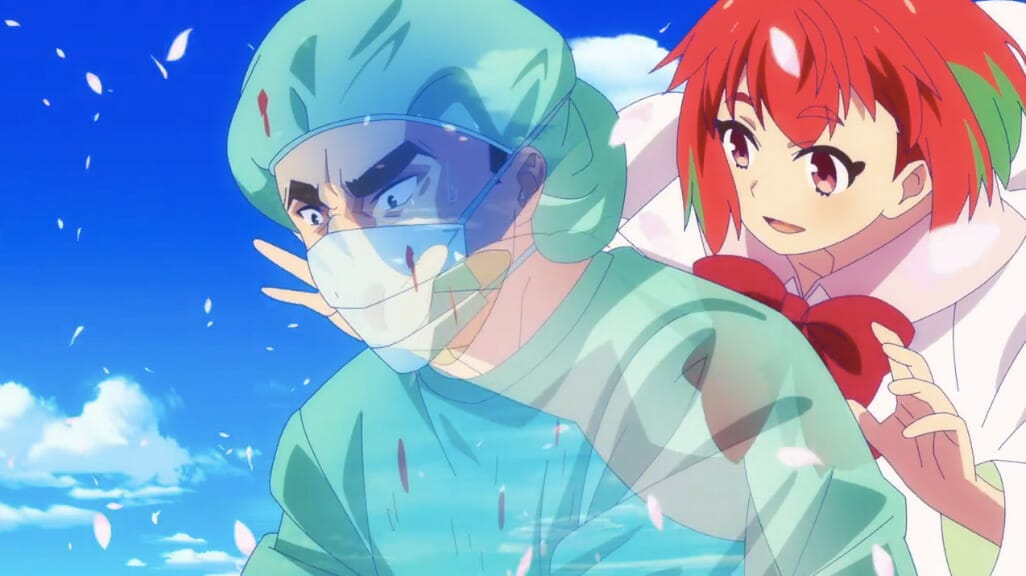
What makes Healer Girl so unique to the magical girl genre comes down to the type of magic: while we don’t know in so many words how it works, we understand that Healers can channel magic through their voices and create a specific environment conducive to restoration. Only those who are in tune to the magic of vocal medicine can witness this alternate plane of existence created by it. There are established songs that are used in common medical practice, and are utilized for specific tasks, whether it’s Kana helping an elderly woman relax in episode one, or the girls assisting both patient and surgeons to ensure a safe operation in episode four. There are no transformations or magic wands, but there are rules and regulations.
There is risk each time they use their abilities—those who are undertrained can potentially worsen the conditions of their patients, as seen in episode two when Kana tries to work with her colleague Sonia to assist a pregnant woman in early labor. When they assist in the operation room, the visuals of the Healing plane are daunting, with earth crumbling beneath them and red lightning shooting out from the operating table upon the discovery of a complication in the surgery. The girls, who are taking shifts to keep their song going as the surgeons work, have to patch up the earth as well as the spirits of those they’re protecting, and by the end it’s clear the operation would not have been successful without them.
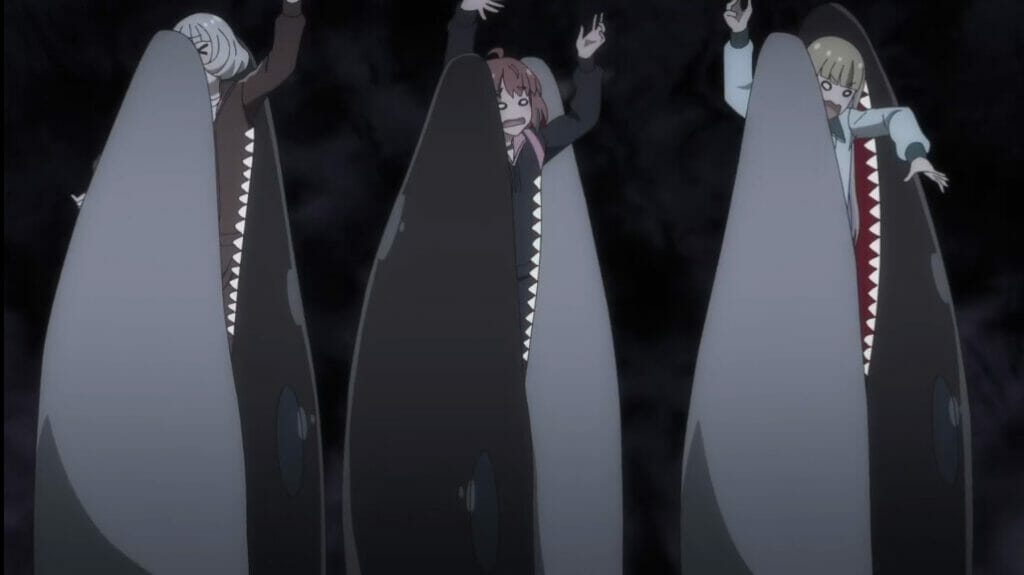
When it comes time for the girls to aim for C-Rank, their own lack of confidence manifests in them being eaten by sharks in the Healing Plane before they can successfully complete their song. And when the girls assist Mistress Karasuma in a very daunting surgery, we see her singing away waves of blood and tumors manifested as giant spiky balls obstructing the earth. This imagery captures the stress and high stakes of a medical environment in a way that is far from sugar-coated, taking advantage of its demographic to explore grounded issues and realistic stakes within its magical imagery.
As well as being part of the worldbuilding, music is woven throughout more day-to-day character interactions. Since they are so in tune to their voices, the girls often end up communicating in song outside of Healing (as someone who went to an arts high school, I can confirm this is also true of real life teenagers who train in vocal instrumentation). They can also use their abilities completely non-medically, as was the case when they perform at Kana’s high school cultural festival. Reimi uses her voice to help manifest giving freedom to her cousin Aoi, who had been letting her job as Reimi’s maid interrupt her own dreams of pursuing magic.
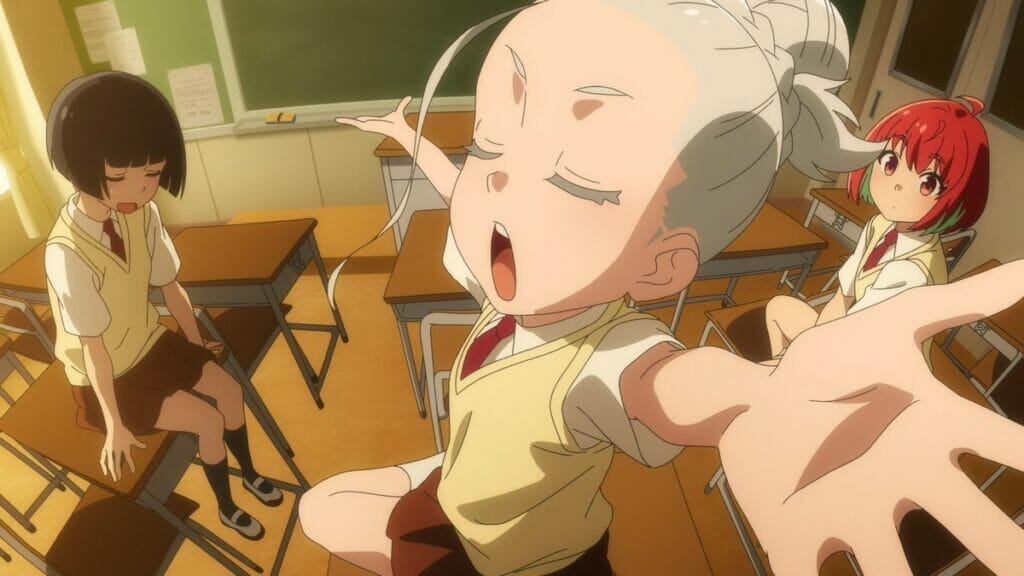
But the most wonderful thing in the series is visualizing the power of music, something that I think most fans of music would attest to being real and like magic. The vocal album for the series makes for a perfect motivating and relaxing listen even outside the context of the show itself, and every week viewers could look forward to a delightful little story diving just a bit deeper into one of the characters, as we watched these girls grow stronger in their bonds with each other and with their own self-confidence.
Many magical girl fans cite the hope their stories bring as the reason for their love of the genre, and this series is overflowing with that. Kana, Hibiki and Reimi all have different paths to becoming Healers, and we see how their choices affect the people in their own lives, and how their friendship is strengthened by this shared passion. Magic aside, so much of the story is quite mundane in nature. Hibiki is a teenager from the countryside who moved to the big city to follow her passions. Reimi’s passion for vocal medicine is intertwined with her older “cousin” and lifelong maid, Aoi, who has a passion for piano.

For Kana, her becoming a Healer was a way to pay forward the way she was saved by a Healer as a child, but her daily life outside of Healing is quite the normal one for a high schooler. Even the finale, which shows C-class Kana reaching out in Japanese to Heal a girl who doesn’t understand a word of what she’s singing, reflects the power of music to reach people beyond language barriers in the real world, as can be seen in international fans enjoying the music of Healer Girls.
So many aspects of what Healer Girl is makes for a one of a kind magical girl series. It might not be recognizable as one to the layperson, but it hits all the appropriate markers to make it so, while giving us a simple and wholesome problem similar to that of a non-magical idol series: bettering yourself to reach a wider audience. It isn’t afraid to get dangerous, but we can feel safe in the dangers, knowing that the girls have the support of their Mistress to get through their challenges. It feels safe to show even to some children because of this, which is a rare feat for modern magical girls made for an older audience in a late-night time slot.
At the end of the series, there are still many questions remaining, whether they’re about the nature of the magic itself, or where the girls will go on in their personal futures. There is absolutely the possibility of expanding this franchise further beyond the 12 episodes we got this Spring, but unfortunately the news has already come out that the Healer Girls idol group will be performing their final live show on October 8th, which leaves little chance of getting an addition to the story. One thing is for certain, though: between its innovative take on magic and the way it engages with its subject matter, Healer Girl gives hope not just for the viewer, but for the future of what magical girls might be in this decade.


